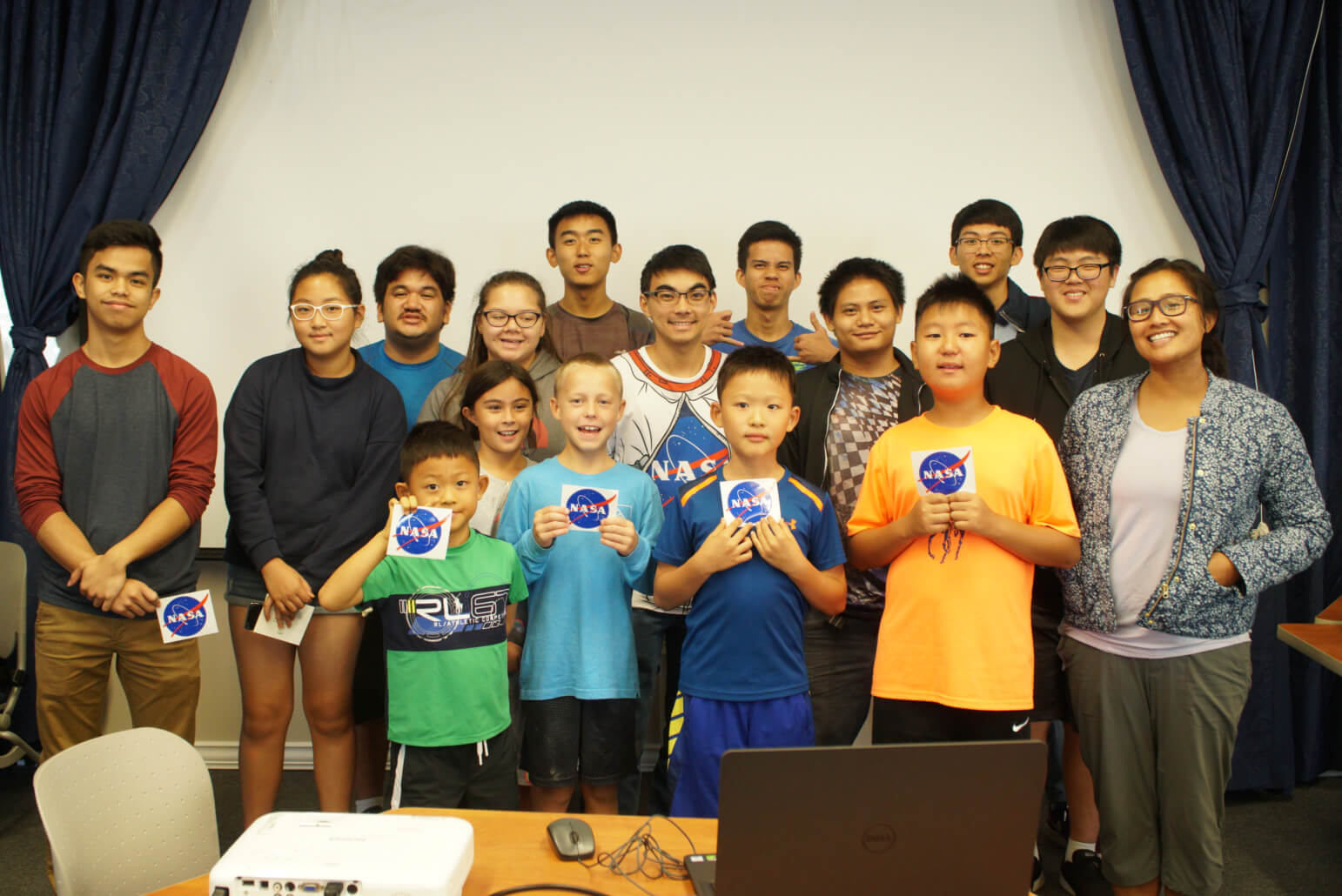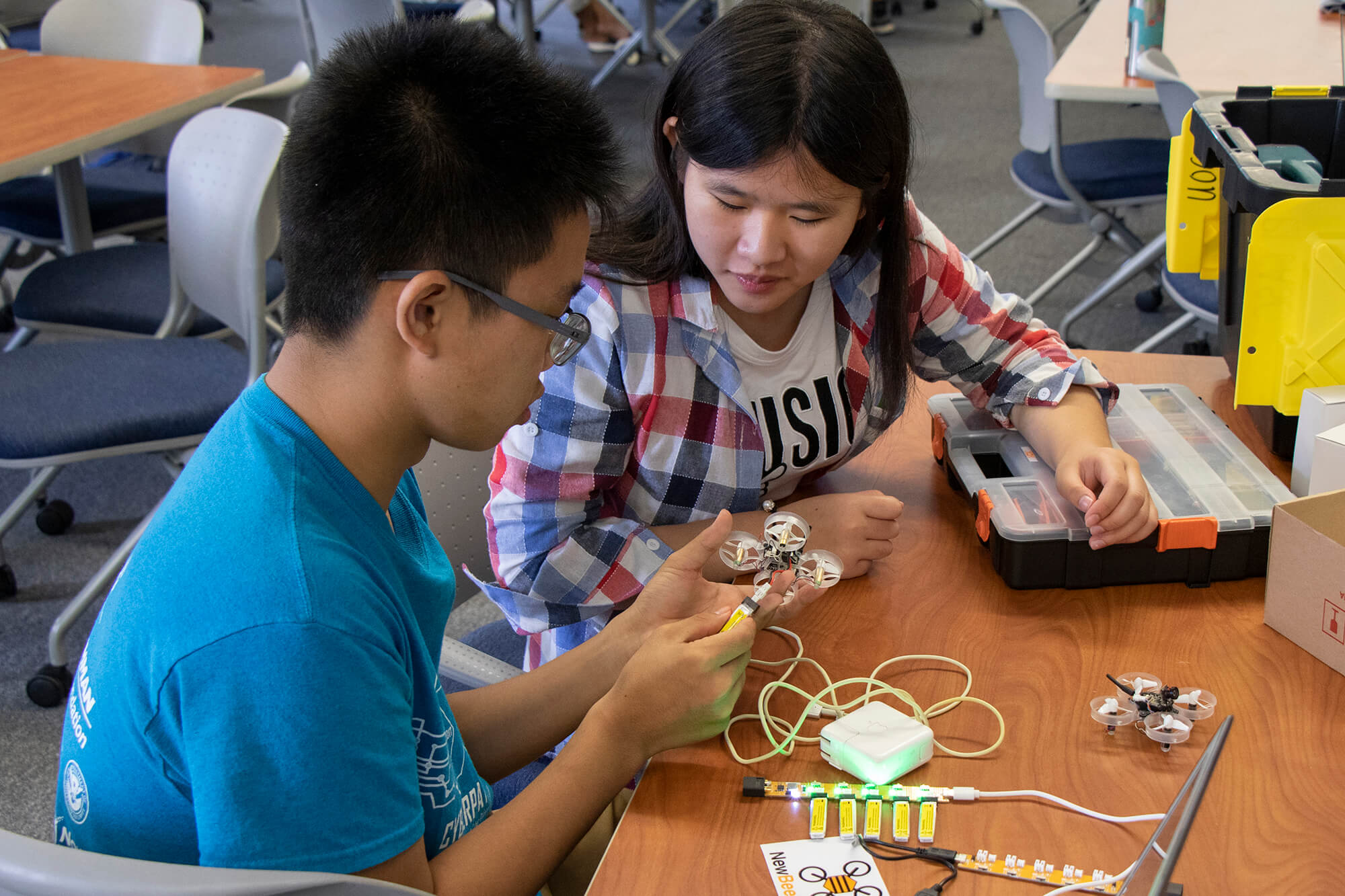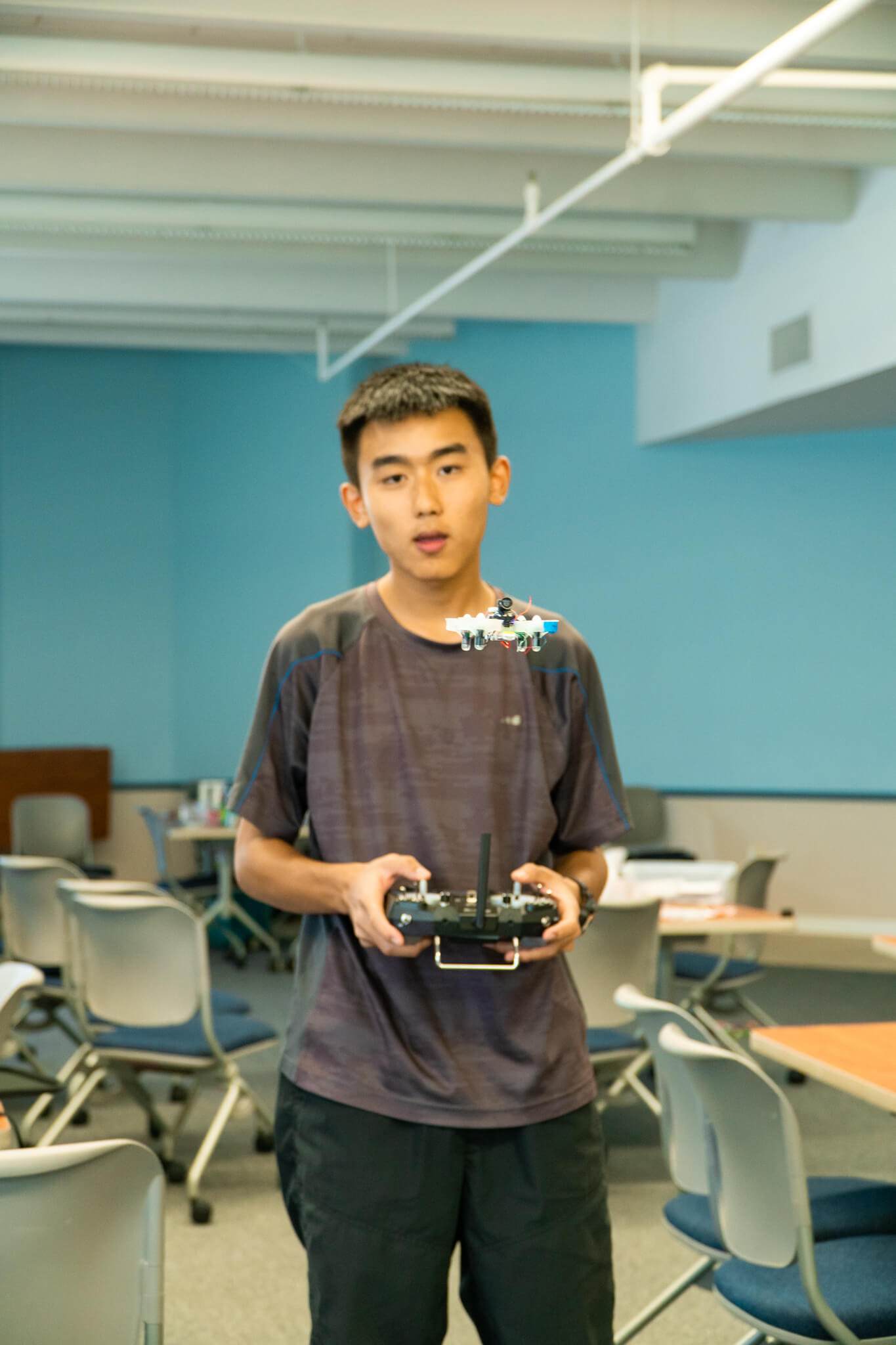UOG workshop teaches responsible UAV flight mechanics
UOG workshop teaches responsible UAV flight mechanics
UOG workshop teaches responsible UAV flight mechanics
6/4/2019


Participants of the Flight Mechanics and Flight Assembly Workshop held from May 28 to May 31 at the University of Guam engaged in hands-on activities that taught them the fundamentals of building and operating unmanned aerial vehicles (UAV).
A mix of children, teens, and adults worked in groups to learn about UAV assembly and flight under the guidance of Evan Kawamura, a doctoral candidate at the University of Hawai’i at Mānoa’s College of Engineering. The participants used introductory Lego Flybrix and Tiny Whoop kits to help them through the process.
“We had good participation and enthusiasm, especially when they got to fly,” Kawamura said. “When I was a high school junior, I got to work with quadcopter UAVs, and it is what I’m still working on today. I hope that exposing high school students and those of other age levels to this technology will spark interest to pursue a STEM-related field, just like how my high school internship sparked a desire for me to pursue mechanical engineering.”

Yvan Chu, a graduating senior at John F. Kennedy High School, said the hands-on experience was beneficial to his knowledge of UAVs. Chu was part of JFK’s Young Engineering Team of Islanders that competed and won the Real World Design Challenge’s National Unmanned Aerial System Challenge, which took place in April in Washington, D.C.
“In the competition, I dealt a lot with the theoretical designing of the UAV, but [at the workshop], I put it into practice and worked on drone designing and assembly hands-on. I really got to see what were the pros and cons of designs when you’re physically applying it into one kit,” Chu said.
The workshop was made possible through grant funding from NASA Hawaii EPSCoR Cooperative Agreement Notices and the Hawaii Space Grant Consortium, with support from NASA Guam EPSCoR and the UOG Pacific Islands Climate Adaptation Science Center.
“UAV technology has so many applications, from mapping coral reefs to measuring submarine groundwater discharge,” said Romina King, program director for the Pacific Islands Climate Adaptation Science Center at UOG. “It is imperative that we expose our youth to these technologies early so that they are equipped with tools for future research and inspired to pursue STEM careers.”
